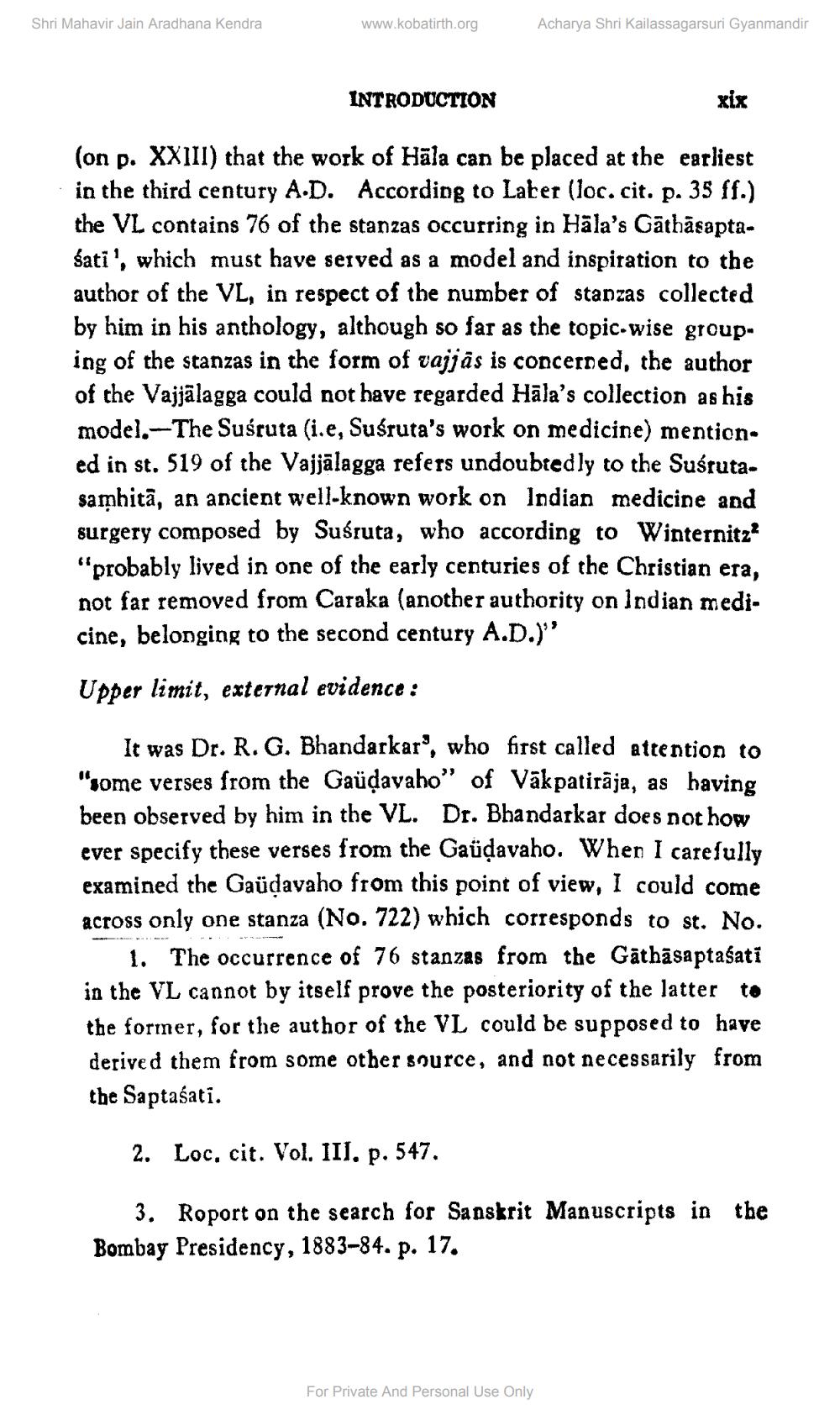________________
Shri Mahavir Jain Aradhana Kendra
www.kobatirth.org
Acharya Shri Kailassagarsuri Gyanmandir
INTRODUCTION
xix
(on p. XXIII) that the work of Hāla can be placed at the earliest in the third century A.D. According to Later (loc. cit. p. 35 ff.) the VL contains 76 of the stanzas occurring in Hāla's Gāthāsaptaśati', which must have served as a model and inspiration to the author of the VL, in respect of the number of stanzas collected by him in his anthology, although so far as the topic.wise grouping of the stanzas in the form of vajjās is concerned, the author of the Vajjālagga could not have regarded Hāla's collection as his model.-The Susruta (i.e, Suśruta's work on medicine) mentioned in st. 519 of the Vajjālagga refers undoubtedly to the Suśrutasamhita, an ancient well-known work on Indian medicine and surgery composed by Suśruta, who according to Winternitz "probably lived in one of the early centuries of the Christian era, not far removed from Caraka (another authority on Indian medicine, belonging to the second century A.D.)!! Upper limit, external evidence :
It was Dr. R. G. Bhandarkar', who first called attention to "some verses from the Gaüqavaho" of Vākpatirāja, as having been observed by him in the VL. Dr. Bhandarkar does not how ever specify these verses from the Gaüqavaho. When I carefully examined the Gaüdavaho from this point of view, I could come across only one stanza (No. 722) which corresponds to st. No.
1. The occurrence of 76 stanzas from the Gathāsaptaśati in the VL cannot by itself prove the posteriority of the latter to the former, for the author of the VL could be supposed to have derived them from some other source, and not necessarily from the Saptašati.
2. Loc. cit. Vol. III. p. 547.
the
3. Roport on the search for Sanskrit Manuscripts in Bombay Presidency, 1883–84. p. 17.
For Private And Personal Use Only




